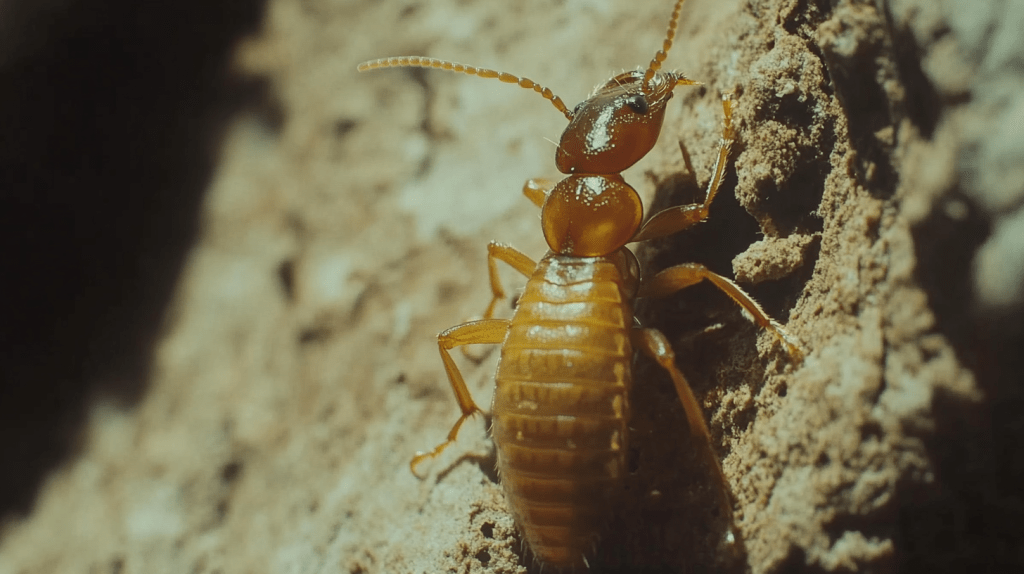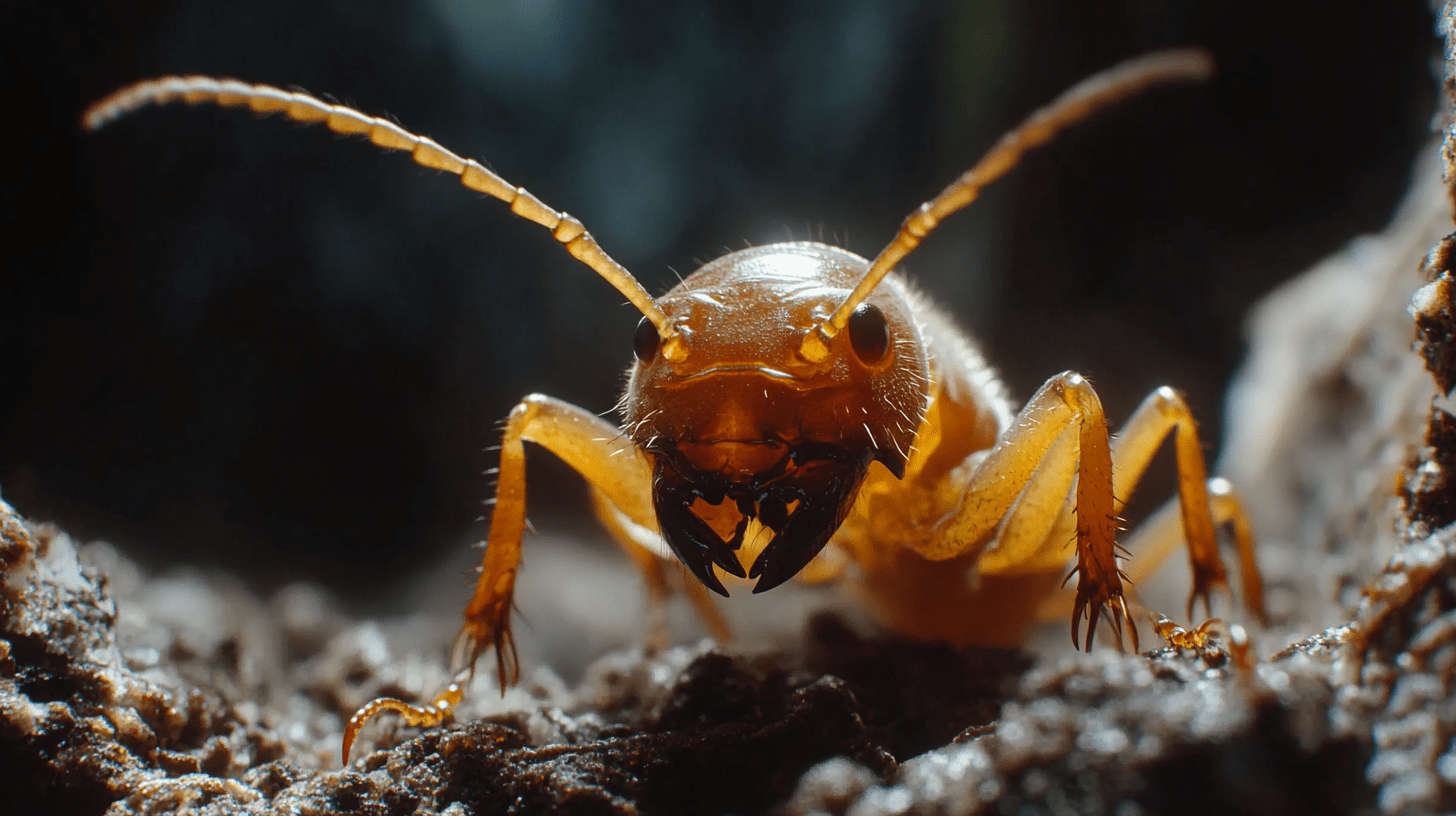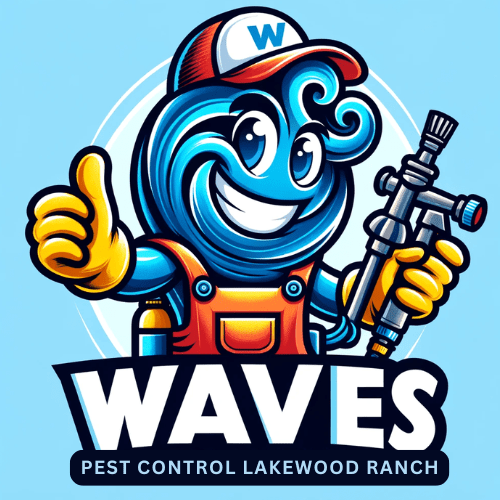
What are Subterranean Termites?
Subterranean termites are cream-colored to dark brown insects that live in underground colonies, sometimes with up to 2 million members. They build mud tubes for protection and require contact with soil to survive. As the most destructive termite species in North America, they cause over $2 billion in structural damage annually. Professional pest control is essential for managing infestations.
Subterranean Termites – Silent Destroyers Below Your Home
Subterranean termites are one of the most destructive termite species found in Florida, including in Lakewood Ranch. These termites live in underground colonies and build intricate mud tubes to travel between the soil and the wooden structures of your home. Known as the “silent destroyers,” subterranean termites feed on wood from the inside out, often causing significant structural damage before you even realize they’re there.
A typical subterranean termite colony can contain hundreds of thousands of termites, including a queen that lays thousands of eggs per day. These termites thrive in Florida’s warm and humid climate, which allows them to remain active year-round. Unlike drywood termites, subterranean termites need moisture from the soil to survive, which is why they build mud tubes to stay connected to the ground while feeding on your home’s wood framework.
Signs of an infestation often include the presence of these mud tubes along foundations or walls, hollow-sounding wood, and the occasional sighting of swarming reproductive termites in the spring. Because they can cause severe and costly damage, early detection and treatment are crucial for protecting your home from these destructive pests. Professional termite control is essential to prevent their spread and ensure they don’t return.
Types Of Subterranean Termites
Subterranean Termites in Florida and Southeastern U.S.
Subterranean termites found in Florida and the southeastern United States are divided into two main categories: native and invasive species. These termites are known for causing significant structural damage and are responsible for billions of dollars in damage annually in the U.S.
Native Subterranean Termites:
- Eastern subterranean termite (Reticulitermes flavipes): The most widely distributed species in North America.
- Reticulitermes virginicus
- Reticulitermes hageni
Invasive Subterranean Termites:
- Formosan subterranean termite (Coptotermes formosanus): A highly invasive and destructive species.
- Asian subterranean termite
- West Indian subterranean termite
Key Characteristics of Subterranean Termites:
- Size: Workers are typically 1/8 to 3/8 inches long.
- Color:
- Workers: Cream-colored.
- Soldiers: Brown heads and cream-colored bodies.
- Reproductive swarmers: Dark brown to black.
- Wings: Reproductive swarmers have two pairs of equal-length wings.
- Habitat: Live in underground colonies or moist areas above ground.
- Behavior: Build distinctive mud tubes for travel and protection.
The Eastern subterranean termite (Reticulitermes flavipes) is the most widely distributed species in North America. In contrast, Formosan and Asian subterranean termites are highly destructive invasive species. Subterranean termites need contact with soil to survive, which differentiates them from drywood and dampwood termites.
Subterranean termites are responsible for the majority of termite damage in the United States, causing billions of dollars in damage annually. They require contact with soil to survive and thrive, unlike drywood or dampwood termites.
Subterranean Termite Identification
Subterranean Termites: Identification, Behavior, and Infestation Signs

Physical Characteristics
- Workers: 1/8 to 3/8 inches long, cream-colored or pale
- Soldiers: Similar length to workers, with larger brown heads and large mandibles
- Swarmers: Dark brown to black, about 1 inch long, with two pairs of wings
Distinctive Features
- Workers are wingless and cream-colored
- Soldiers have large mandibles and brown heads
- Swarmers are dark brown with wings and are about 1 inch long
Behavior
- Live in underground colonies
- Build distinctive mud tubes for travel and protection
- Feed on wood and other cellulose materials
- Swarm in spring to start new colonies
Signs of Infestation
- Presence of mud tubes on walls, foundations, or wood surfaces
- Damaged wood with a layered or honeycomb appearance
- Discarded wings near windows or doors
- Piles of sawdust-like droppings (frass)
Habitat
- Nests are usually underground
- Prefer moist environments
- Found in wood in contact with soil
Key Identification Factors
- Presence of different castes (workers, soldiers, swarmers)
- Distinctive mud tubes
- Pattern of wood damage (eating along the grain, leaving harder portions)
For definitive identification, it’s best to consult with a pest control professional, as subterranean termites can sometimes be confused with other wood-destroying insects.
How Get Rid Of Subterranean Termites

Reliable Termite Control in Lakewood Ranch!
Ready to enjoy a termite-free home? Contact Lakewood Ranch Pest Control at (941) 318-7612 for fast, friendly, and effective termite solutions. Serving the entire Lakewood Ranch, FL area, we keep your home safe and comfortable all year long!
Get Started








